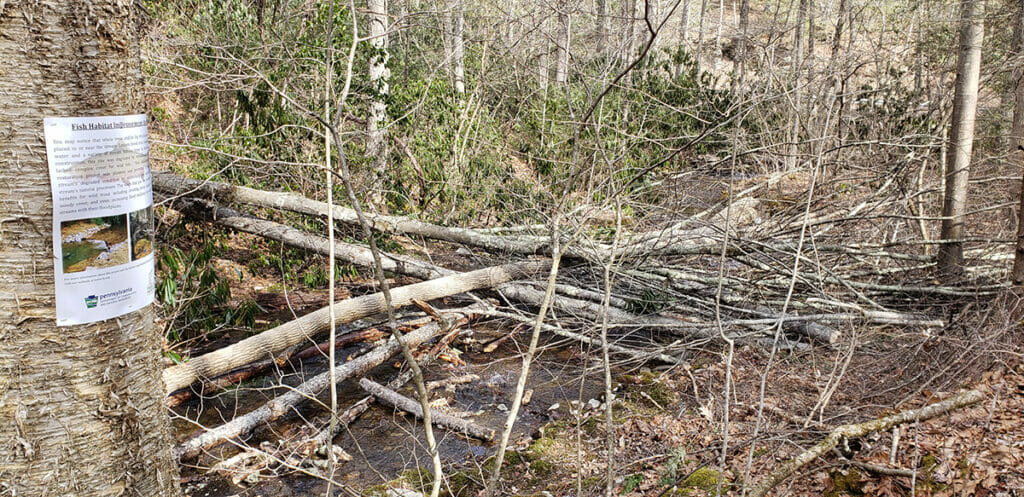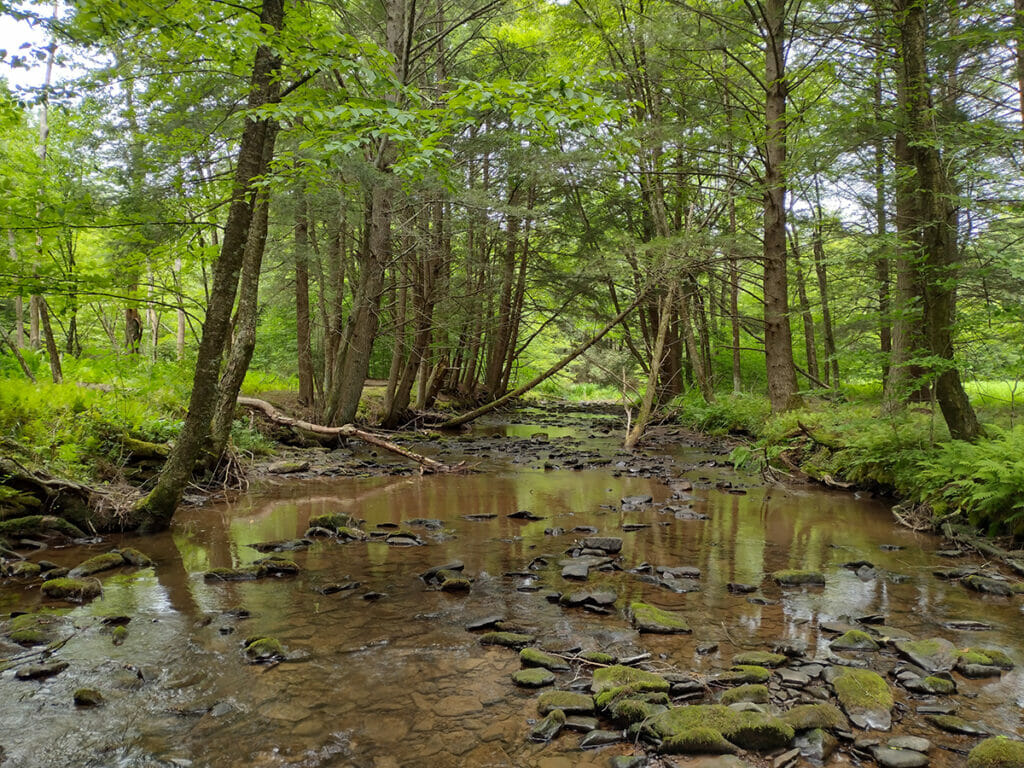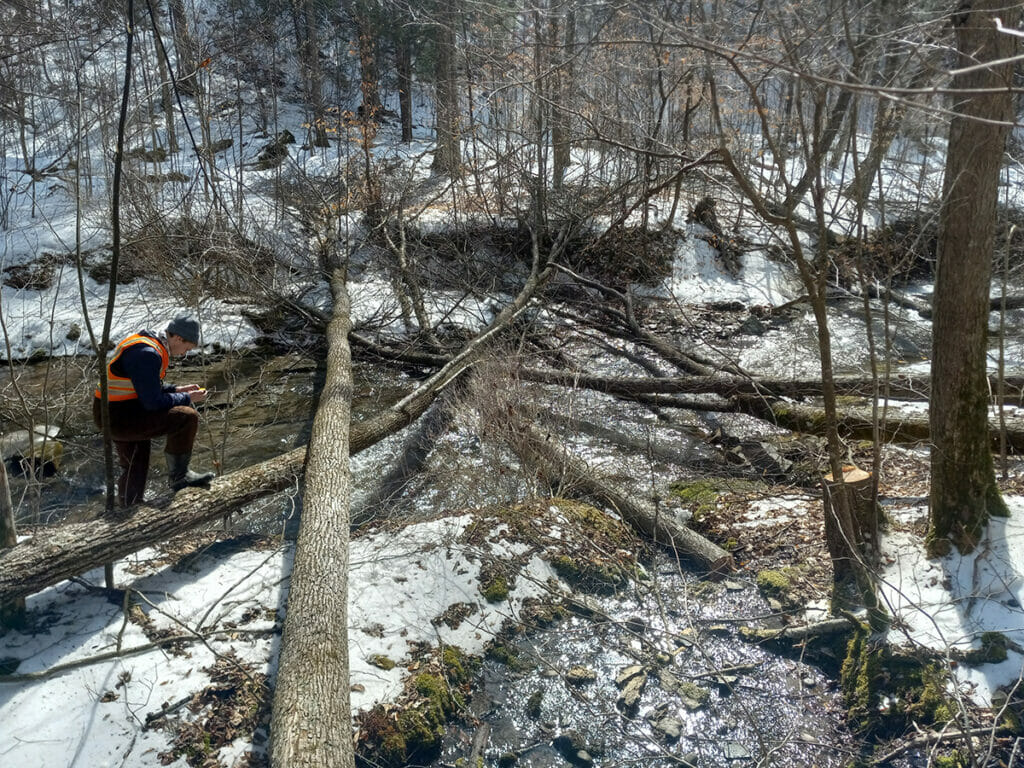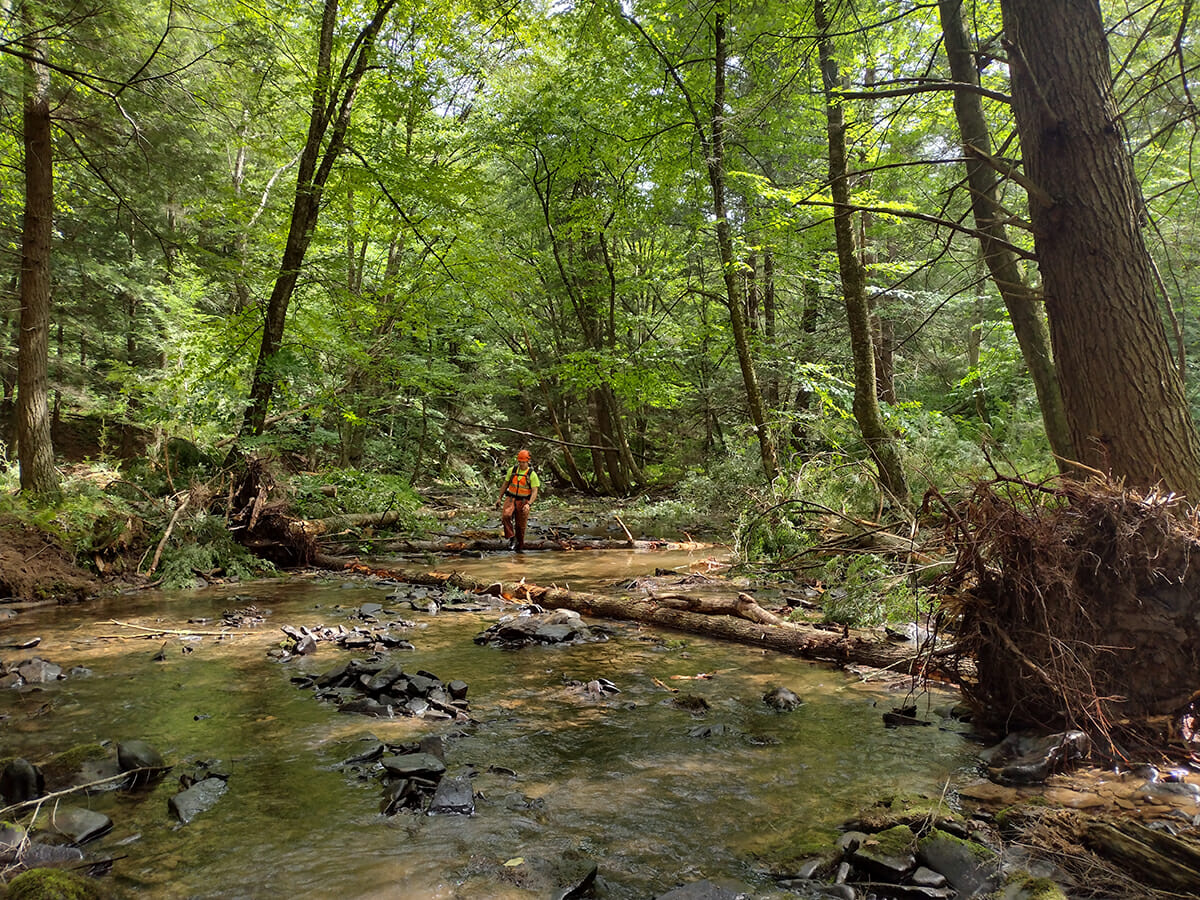Loading streams with wood may make the fishing tougher, but it’s great for trout.
“Why do they keep putting trees in our stream!?”
In the Northeast, where I work, this is a question we have been hearing a lot over the past couple of years, often with a sense of sadness or irritation in the tone of the inquirer.
The answer to the question includes a list of biological, hydrologic, and geomorphic motives, but first we should ask another question: Why isn’t there more wood in our streams?
In the mid-1800s, timber harvesting in the Northeast was at its peak. The quest to harvest this precious resource led to degraded stream conditions and almost completely removed riparian forests in many of our watersheds.
To aid the transport of logs to downstream mills, which sawed them into lumber, streams were often dredged, cleared with dynamite, or even moved. The removal of the boulders and obstacles in streams changed flow patterns and increased velocities, leading to many unintended consequences.

The removal of mature riparian forest from our headwater streams also had this effect.
For the past century, streams have been starved of naturally occurring wood additions, as a result of disturbances such as tree mortality, storm damage, or fire. Streams have become entrenched from severe erosion, and have been over-widened where the eroded material has been deposited.
As a result, streams lack complex habitat and, in many cases, are devoid of pools and spawning habitat. The loss of pools and increased average widths also affect water temperature, given that these conditions make the stream more susceptible to increases in air temperature.
For decades, TU and our allies have been working to improve streambank erosion and habitat using a variety of tools. Most commonly we have used wood, rock, and steel. These are the tried-and-true log structures that volunteers have labored to install in countless locations over the years. These types of projects are effective at stabilizing localized erosion and improving habitat for fish and other aquatic organisms.
Over time, the types of structures that TU staff, volunteers, and other organizations have utilized has expanded, with the pounding of rebar and laughs of tired folks filling the air with optimistic energy.
Along with the construction of these projects, groups like TU have been monitoring physical and biological response. This monitoring, conducted on projects throughout the Northeast and beyond, has helped to shape how we approach stream restoration and habitat improvement today. It has taught us that wood is good, and that the degraded condition of our streams can be reversed.

The effects of flooding, erosion, and impacts to the biological resource can all be improved with the strategic addition of large wood to streams and the preservation and often restoration of riparian forest buffers.
These benefits are the answer to that question people ask us all the time. Why add trees to streams?
The culmination of decades of experience, mistakes and successes, has shown us that this approach can improve the entire system rather than simply treating localized erosion.
The addition of large wood jumpstarts the natural process of wood recruitment into treated streams. In many of our native and wild trout strongholds across the Northeast, riparian buffers are once again healthy enough to allow for the strategic selection of trees to start this process.
The result is a beautiful mess.
Anglers can be forgiven for both cursing and praising these projects. The biologists charged with monitoring fish populations certainly do!
The complexity of habitat resulting from the large wood additions creates deep pools with abundant cover, making it very hard to insert probes from the electrofishing backpack and collect the wild fish now occupying this newly formed habitat.
An additional hazard comes from the hooks of dozens of flies or lures hanging from the roots, limbs, and trunks around the hole. Anglers worked tirelessly during the winter months to tie their special pattern, only to have the complexity of the stream they were fishing steal that effort from them.

Projects to add wood to streams — often referred to as “strategic wood addition” or “large wood addition” — are carefully placed and designed by trained professionals with the intent of improving the entire ecosystem.
We do not only focus on instream practices but also look up through the floodplain to upland conditions affecting our streams. We work to restore riparian buffers and add complexity to our streams so that they can be more resilient and provide for the beloved biological resources that we all enjoy.
Restoring these natural conditions leads to improved floodplain connectivity which builds resilience into our systems, recharging groundwater and decreasing storm flows.
Please join us in accepting this beautiful mess. While we sometimes must sit on the bank for an hour or more looking for the only shot into the hole, there is one — a hole where there was once a gravel bar choked with sediment and likely influenced to form after our historical practice of removing wood from streams.
Jake Tomlinson is a coldwater habitat program manager for Trout Unlimited, based in Pennsylvania.



